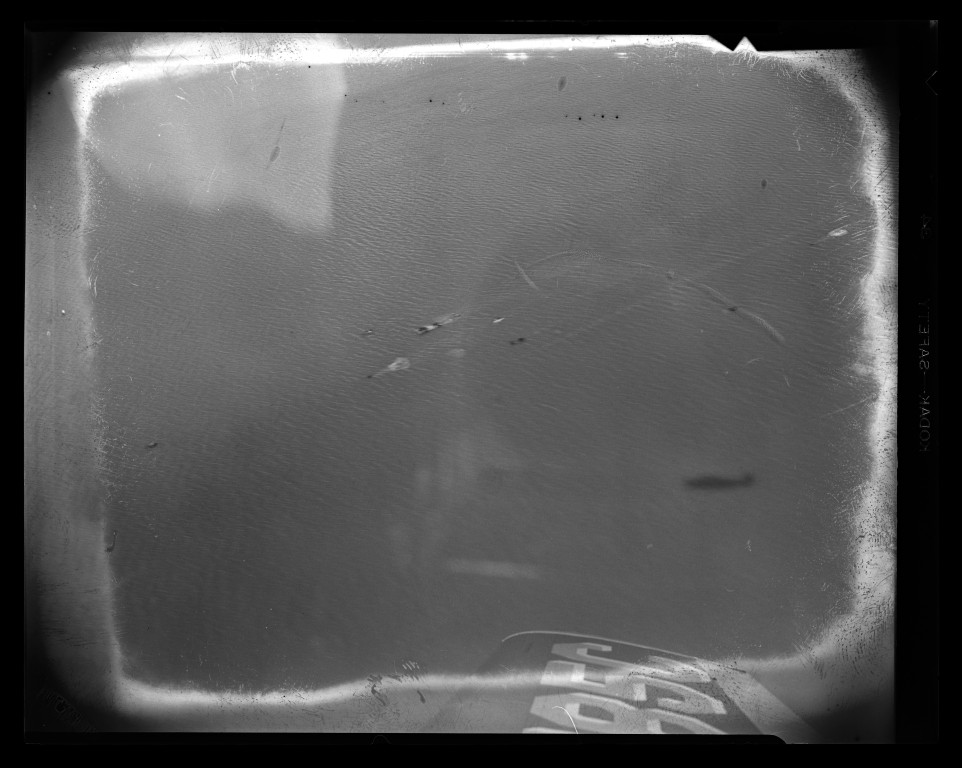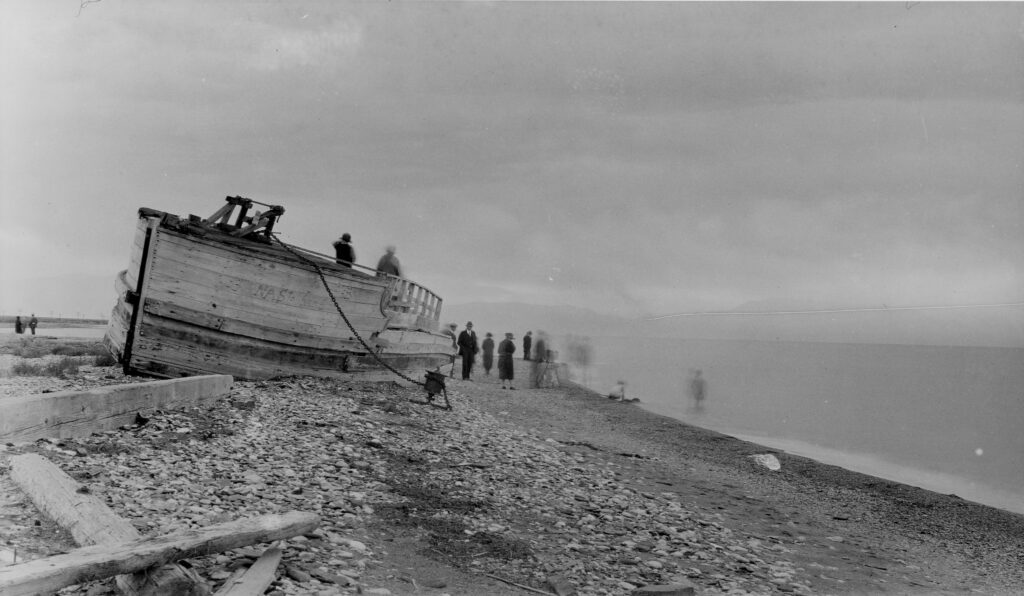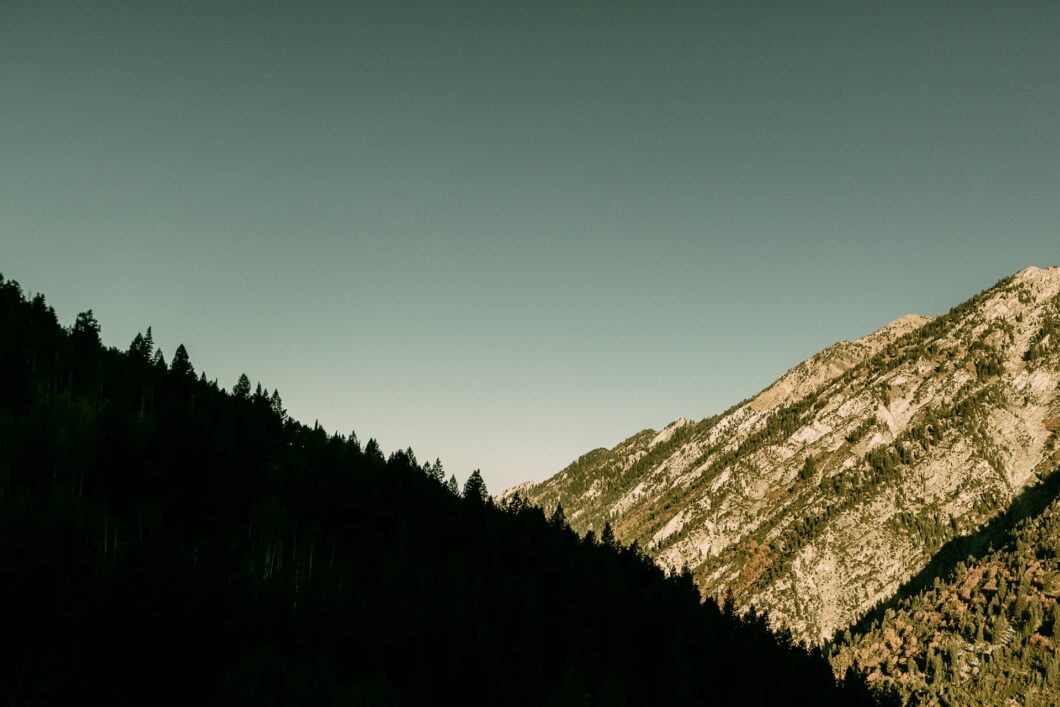Minutes from the Great Salt Lake Whale Watch Society
Attending
Ryan Habermeyer, Society President
Ryan Habermeyer, Folklorist
Ryan Habermeyer, Amateur Zoologist
Ryan Habermeyer, Archivist
Ryan Habermeyer, True-Believing Mormon
Ryan Habermeyer, Formerly-Known-as-True-Believing-Mormon
Not in Attendance
David Hyams, Christine Baczek
Meeting called to order at 5:01 PM by President.
Business: Motion to accept the minutes from previous meeting. Motion unanimously approved.
Opening Remarks: As a historical anecdote, President Habermeyer related that when Jim Bridger approached the Great Salt Lake in 1824, he imagined he had reached the Pacific Ocean. The infamous mountain man, oblivious he was standing on the corpse of a pluvial lake that for fifteen thousand years had been slowly evaporating and would continue to slowly evaporate in perpetuity, later told Brigham Young the Wasatch Front was a kind of paradise but it was a mad project to settle there.
Remarks: Archivist Habermeyer corroborated the President’s account as factual. He added that even the Goshute, who had lived in the valley almost as long as the Great Salt Lake had been evaporating, called it Ti’tsa-pa, which means bad water.
Remarks: Amateur zoologist Habermeyer submitted the following photograph from the Utah State Historical Society archives for official Society review and authentication.
Remarks: Folklorist Habermeyer circled several blurry objects, insisting they were whale flukes. Everyone squinted.

Remarks: Archivist Habermeyer dismissed the photo as frivolous. He stated early pioneers tried to breed a seafood empire of oysters and eels and clams and lobsters in the so-called American Dead Sea, but despite all their efforts, nothing survived, their dreams devoured by brine flies.
Remarks: True-Believing Mormon Habermeyer bore his testimony that growing up he was fed a steady diet of rumors about the Great Salt Lake. Stories of the ghost of Jean Baptiste, the local church chorister turned grave robber, wandering Antelope Island. And the whirlpools that swallow up unbelievers. And the Saltair Pavilion, that Coney Island of the West floating on 2,000 pylons like some Arabian Nights fairytale, that mysteriously burned twice.
Remarks: Formerly-Known-as-True-Believing-Mormon Habermeyer corrected his true-believing counterpart, reminding him that he had never actually visited the Great Salt Lake in his youth and, while hearing all manner of legend and lore, only recently started thinking about the lake and how as the water evaporates and exposes the microbialite crust the resulting arsenic dust lifts into the air and swirls down the valley to create picturesque golden sunsets over pools of toxic red algae blooms. Formerly-Known-as-True-Believing-Mormon Habermeyer said the fact that everybody knows they’re being poisoned and do nothing about it is, in part, why he stopped going to church.
Remarks: Amateur zoologist Habermeyer submitted another photograph of the lake for official Society review and authentication, wondering if something was living down there.

Remarks: Archivist Habermeyer lectured that the Aral Sea and Lake Poopó suffered the same fate as the current Great Salt Lake and are now gone. And halfway across the world, in another desert full of questionable religious fervor, is the salt-crusted basin of Lake Urmia, the Great Salt Lake’s doppelgänger. Once an oasis for pilgrims seeking to bathe in the black mud rumored to cure skin afflictions, it is mostly shallow puddles now, the shoreline spackled with crumbling piers and abandoned motels and shipwrecked ferries.
Remarks: President Habermeyer said seeing the dried lakebed is very discouraging. As if nature, tired of Homo sapiens and our main character syndrome, is conspiring to get rid of us drop by drop.
Remarks: Archivist Habermeyer said Lake Urmia is resurrecting now thanks to science.
Remarks: True-Believing Mormon Habermeyer said resurrections don’t come with a user manual.
Remarks: Folklorist Habermeyer shared that when he was a boy, a certain Sunday School teacher, desperate to pacify the rowdy class, told them about a man he knew so distraught by a Democrat winning the presidency that he had a heart attack. His ashes were fired out of a cannon over the lake to put God’s powers of the resurrection to the test. Nobody believed it. But everybody believed it. Recently, when folklorist Habermeyer was standing by the lake—or a relic of what was once the Great Salt Lake—the briny air burning his nostrils, he imagined breathing in that dead man’s dust, anxious about making a home for him in his asthmatic lungs.
Remarks: Archivist Habermeyer proposed a motion to strike folklorist Habermeyer’s anecdote from the record as hearsay. Motion denied (Vote: 4-2).
Remarks: Folklorist Habermeyer admitted he was a gullible child and still is. There’s something about the Utah desert that turns you into a Quixote. The sun, the salt, the fry sauce, the streets laid out in a grid. Utah is a dream, a plague, a canticle, a prophecy, a trance, a curio, an exile, a spleen. Utah is a man in a pickup truck with a bumper sticker that says IN ARMAGEDDON WE TRUST.
Remarks: Amateur zoologist Habermeyer proposed turning attention to pertinent Society business. He reminded members of the upcoming sesquicentennial extravaganza of English gentleman scientist-turned-entrepreneur James Wickham’s attempt in 1875 to transform the lake into a whale farm.
Remarks: Folklorist Habermeyer shared a flyer prepared for the sesquicentennial celebration informing visitors how, after catching a pair of blue whales near Australia, Wickham imported the thirty-foot siblings to San Francisco, where he supposedly shipped them east using experimental containers on the recently completed transcontinental rail. Wickham planned to keep the leviathans in a fenced-off pen just offshore to breed them for their blubber, but no sooner were the whales released than the newspaper reported they “made a beeline for deep water and shot through the wire fence as if it had been made of threads.”
Remarks: True-Believing Mormon Habermeyer said he knows beyond a shadow of a doubt this definitely happened.
Remarks: Formerly-Known-as-True-Believing-Mormon Habermeyer said this probably did not happen.
Remarks: Archivist Habermeyer said this absolutely did not happen.
Remarks: President Habermeyer said only God knows what happened.
Remarks: Folklorist Habermeyer said it is possible Wickham’s whales existed, but there’s a chance no evidence of them has been recovered because they miraculously escaped their landlocked orphanage by jumping the levees where the lake meets the Bear River and swam north in an upside-down-U along the Wasatch Mountains, risking the shallow tributaries of creeks and streams in the northern Cache Valley before reaching the Portneuf River in Idaho, then meandering west-northwest until connecting with the Snake River and carving their watery route through Hells Canyon and the Palouse Hills of eastern Washington, turning south-southwest into the Columbia River through Oregon until triumphantly emptying into the Pacific near Astoria, an old fur-trading port city whose namesake means starry-one.

Remarks: Archivist Habermeyer asked folklorist Habermeyer, Is there anything you won’t believe?
Remarks: Amateur zoologist Habermeyer submitted more aerial photographs of the lake that contained strange shadows and other figures in the water, possibly whales.
Remarks: Archivist Habermeyer told amateur zoologist Habermeyer he was an idiot and confirmed with the Utah State Historical Society that these are merely blurs, blots, backscatter, and other optical illusions.
Remarks: Folklorist Habermeyer said, Hold on, let’s not be impetuous. They could be fins and flukes and, yes—see, right there?—a whale head breaching the surface for air.
Remarks: Archivist Habermeyer said folklore is a pseudoscience, and in all the times he walked into the lakebed, he’d never found whale skeletons.
Remarks: Amateur zoologist Habermeyer said the lake will be gone within five years.
Remarks: True-Believing-Mormon Habermeyer said he believes with every fiber of his being that the lake will come back. It always comes back if we have faith.
Remarks: Amateur zoologist Habermeyer said arsenic dust doesn’t care about your faith.
Remarks: Formerly-Known-as-True-Believing-Mormon Habermeyer said we should let the lake go extinct. Then we’ll know for sure what’s down there.
Remarks: Folklorist Habermeyer said the aerial photos were rather convincing.
Remarks: True-Believing-Mormon Habermeyer said he doubted their authenticity because you can’t really see anything from that high in the air.
Remarks: Formerly-Known-as-True-Believing-Mormon Habermeyer asked, What does that say about God?
Remarks: Amateur zoologist Habermeyer said there must have been a moment 10,000 years ago when God returned to Earth after vacationing on the rings of Saturn, or escaping a nursing home, or finishing a bowel movement—whatever—and found all the glaciers melting, all his Cro-Magnon sick, all the cryptids extinct. He said God must have wept knowing his laboratory of yetis, glyptodons, alkonosts, and Megalonyx had been overrun by these evolutionary accidents, by these vain Homo sapiens who so quickly are convinced of their own divinity.
Remarks: President Habermeyer said some things just go extinct.
Remarks: Archivist Habermeyer said nothing really goes extinct. A fossil keeps telling a story long after it’s dead.
Remarks: Folklorist Habermeyer agreed, saying something can exist and not exist at the same time.
Remarks: Amateur zoologist Habermeyer said in the nearly 5-billion-year lifespan of the earth, ninety-nine percent of species have gone extinct. There are some twelve million suspected living species, and less than one percent have been documented.
Remarks: Formerly-Known-as-True-Believing-Mormon Habermeyer said Homo sapiens can be neither saved nor improved, and our extinction would be a great blessing, allowing other species more space to dream.

Remarks: President Habermeyer recalled several years ago when reports of a beached whale carcass in a nearby Farmington field tied up emergency dispatch lines for hours. Crowds descended on the farm hoping for a photo but found nothing. Following the hoax, online Google searches for the Great Salt Lake Whale Watch Society surged 3000%.
Remarks: Archivist Habermeyer said some people will believe anything.
Remarks: Folklorist Habermeyer said a rumor after a rumor after a rumor is the truth.
Remarks: True-Believing Mormon Habermeyer said Jack Mormons have the worst beliefs because they are like chaff driven to and fro in the devil’s whirlwind.
Remarks: Archivist Habermeyer said he believes what he can see.
Remarks: True-Believing Mormon Habermeyer, reminding everyone of his pioneer lineage as the great-great-grandson of Brigham Young’s thirty-second wife, said believing is seeing.
Remarks: Amateur zoologist Habermeyer said Mormons are a biodiverse ecosystem of belief. Fundy Mormons, True-Believing Mormons, Jack Mormons, ProgMos, PostMos, ExMos. There are so many ways to Mormon.
Remarks: Folklorist Habermeyer said every Mormon is a kind of addict. Because no matter how you Mormon, once you’ve been snakebitten by this religion, there’s no antidote. Nobody gets clean. Not now. Not tomorrow. Not for eternity. This religion stays scrimshawed onto your soul.
Remarks: True-Believing Mormon Habermeyer bore testimony to the other Ryans that there’s no harm in belief. Even if it isn’t true, believe it.
Remarks: Formerly-Known-as-True-Believing-Mormon Habermeyer said that’s what the desert does. It is empty and massive and sublime. If it doesn’t kill you, it makes you believe things.
Remarks: Archivist Habermeyer said everything ends except for science. The last lines of poems, the last notes of songs, the last words before the curtain closes. The world is always grinding down to atoms. But crack open an atom and there’s a string humming faintly, a subatomic symphony guiding things. The cosmos are always going extinct, he said, but they’re never empty.
Remarks: Folklorist Habermeyer said he didn’t believe in climate change and didn’t mind extinction. He said this is the beehive state. He said ancient peoples used to practice mellification, when the elderly would eat and drink nothing but honey for weeks, bathing in it even, until all their excretions were honey, after which they sealed themselves inside a trunk full of honey and fermented for decades until becoming a medicinal confection which doctors administered as a cure for fevers, manias, and other maladies.
Remarks: True-Believing-Mormon Habermeyer said, That’s perverse.
Remarks: Folklorist Habermeyer said, No, that’s just good science.
Remarks: Archivist Habermeyer said, Jesus, there’s some sick you can’t cure.
Remarks: Folklorist Habermeyer said he couldn’t surrender his intellectual autonomy to anybody, not even God, much less the scientific-industrial complex. He reminded the other Ryans he grew up out west—he’s a lone wolf.
Remarks: Archivist Habermeyer said, Oh, go chase a roadrunner already.
Remarks: Amateur zoologist Habermeyer said, Have I ever told you about whale evolution?
Remarks: Archivist Habermeyer rubbed his temples and said, Jesus, not again.
Remarks: Amateur zoologist Habermeyer said whales originated in the seas but got bored of the water and left. They grew wolfish skins and learned to howl for a few thousand years. Then, they lost their faith in being wolves and went back to the sea.
Remarks: True Believing Mormon Habermeyer reminded the other Ryans they were all fat as a whale growing up, so no wonder the other church kids bullied them.
Remarks: Formerly-Known-as-True-Believing-Mormon-Habermeyer said he didn’t lose anything. My beliefs evolved, he said.
Remarks: True-Believing Mormon Habermeyer said, My faith is as immobile as a rock.
Remarks: Folklorist Habermeyer said whales and wolves are different species, but they’re still biological cousins.
Remarks: Amateur zoologist Habermeyer said if Wickham’s blue whales escaped, they are probably the ancestors of the 52 Hertz Whale. 52 Blue, he’s called—the loneliest whale in the world. Never seen in the flesh. Since 1989, he’s been calling up and down the Northeast Pacific Basin. As far north as the Kodiak Islands, stretching south all the way to Baja California. An orphan, a freak, a recluse, a wanderer, a neurodivergent cetacean? Nobody knows. Just a lone whale roaming the ocean speaking in a blended dialect nobody can translate. Incredible, really: the largest mammal on the planet, weighing some 200 tons, exists for us only as a ghostly sound.

Remarks: Archivist Habermeyer said ghosts do not exist.
Remarks: Amateur zoologist Habermeyer said the mechanism of blue whale songs, like the whales themselves, remains a mystery. Theories suggest air rhythmically pulsed from the lungs oscillates as it passes through sacs and cartilage, the thick respiratory valves not unlike elastic lips that stretch and fold and vibrate, morphing pressurized air into long, pulsing harmonies of dreamy wails and whines. Over the last fifty years, the frequency of blue whale songs has been falling deeper and deeper.
Remarks: True-Believing-Mormon Habermeyer said faith is the real mystery.
Remarks: Amateur zoologist Habermeyer said the ecology of blue whale sounds, like so much else in our world, is slowly vanishing.
Remarks: Formerly-Known-as-True-Believing-Mormon Habermeyer said maybe they are love songs.
Remarks: Amateur zoologist Habermeyer said 52 on the Hertz scale is an unusual frequency for a blue whale sonic signature. At 180 decibels, the sounds are incredibly loud yet imperceptible to the human ear.
Remarks: Folklorist Habermeyer said perhaps 52 Blue is singing in blue notes, melodies reminiscent of African spirituals just slightly out of place in a composition, deliberately gliding down a scale, then up, then down, then suddenly flat. To be blue is to be alone and in love with ghosts.
Remarks: Formerly-Known-as-True-Believing-Mormon Habermeyer said faith is ghostly too.
Remarks: True-Believing-Mormon Habermeyer said Formerly-Known-as-True-Believing-Mormon Habermeyer is a case study in why it is not good for man to be alone.
Remarks: President Habermeyer asked Society members to please stop being so dramatic.
Remarks: Folklorist Habermeyer wondered how different this Utah desert would be if Wickham had returned with the lore of the Darkinyung people living along the eastern coast of Australia instead of trying to turn himself into an entrepreneurial folk hero. An ancient people who engraved whales on sandstone cliffs. It used to be when a whale carcass washed ashore among the Darkinyung, it was a time of rapture. A fire was lit. Faces were painted. Men danced with emu feathers in their hair. Women used animal skin drums to beat time. After the meat and blubber were flensed, the feast lasted days. Nothing was wasted. Bones became drinking goblets. Ribs were used to frame huts. The heart was buried. Then, the sick were lowered into the pockets of the carcass to bathe in the viscera, removed the next day, and cured of all pain. They told the story of Baiyami, the sky father, who sailed across the Milky Way into the darkness with Gyian, the first whale. Baiyami in his canoe and Gyian submerged in the thick, dark emptiness. Go, Baiyami said as they floated out of the abyss into our galaxy and its nursery of stars, be kind here and this will be your dreaming place.

Business: Motion to authenticate archival photographs as evidence of Wickham’s whales. Motion failed (Vote: 3-3). Issue shelved for further debate. Meeting adjourned at 5:02 PM.
Acknowledgements: Cover photo by Joe Dudeck on Unsplash, all other images courtesy of the Utah State Historical Society

